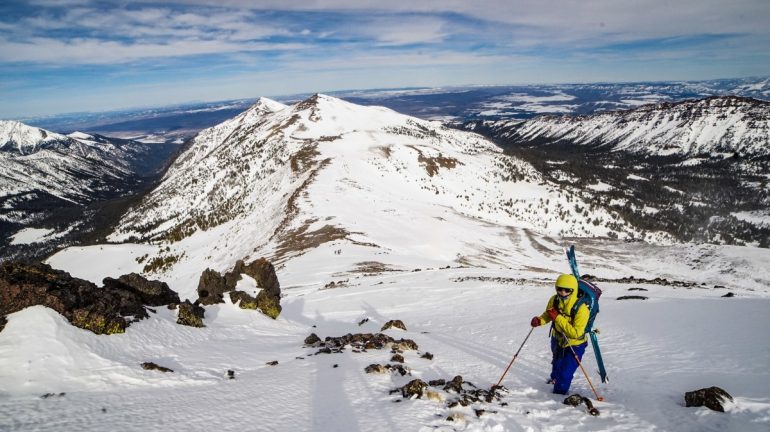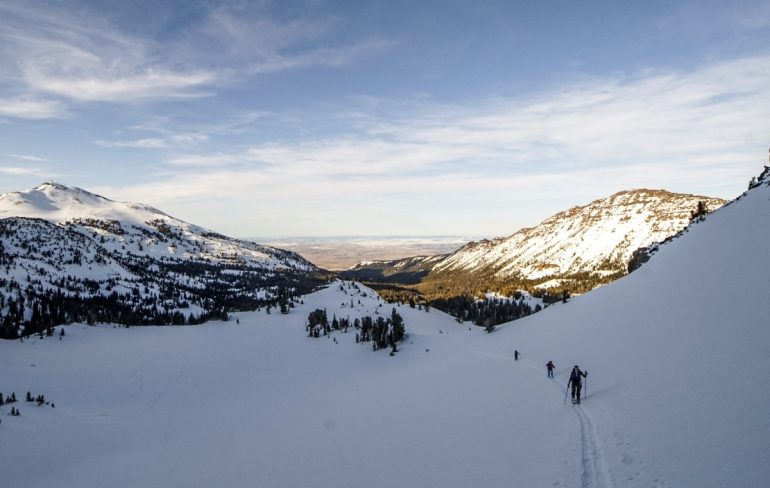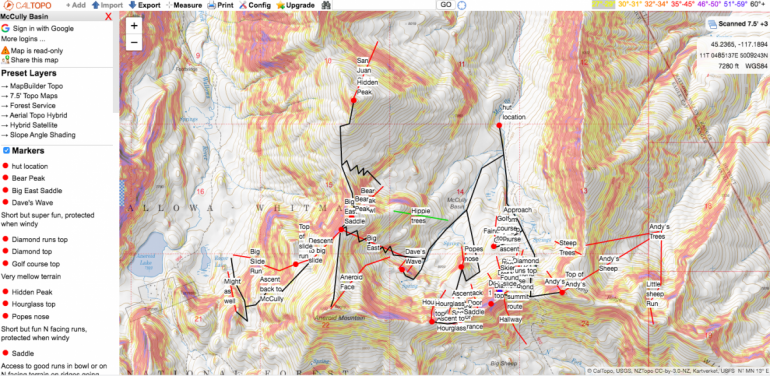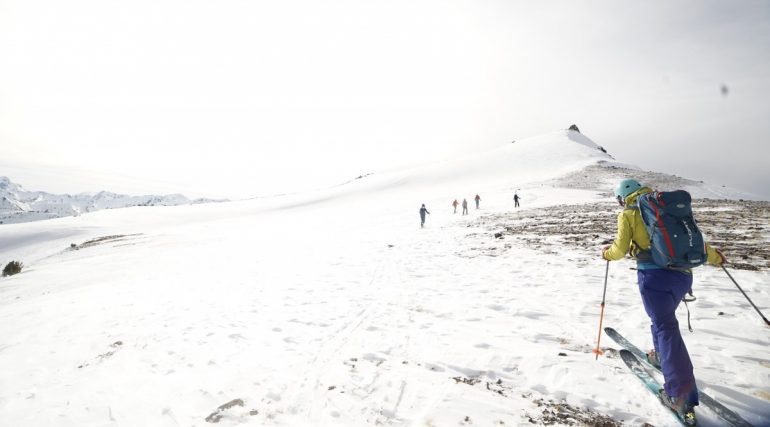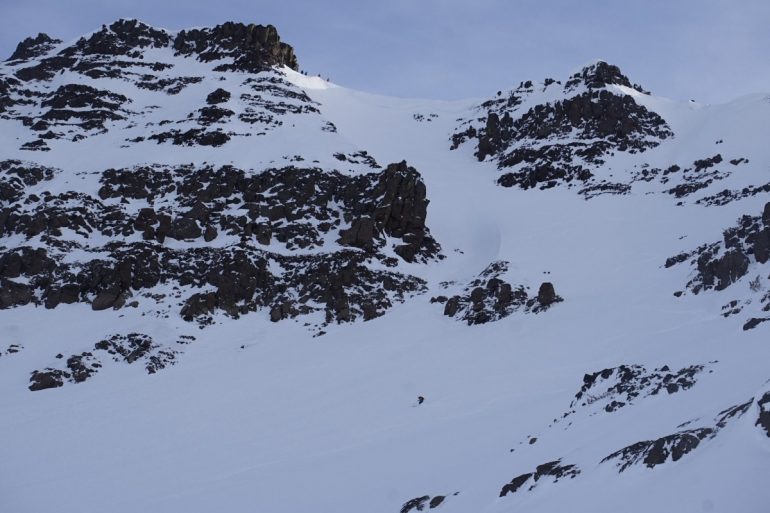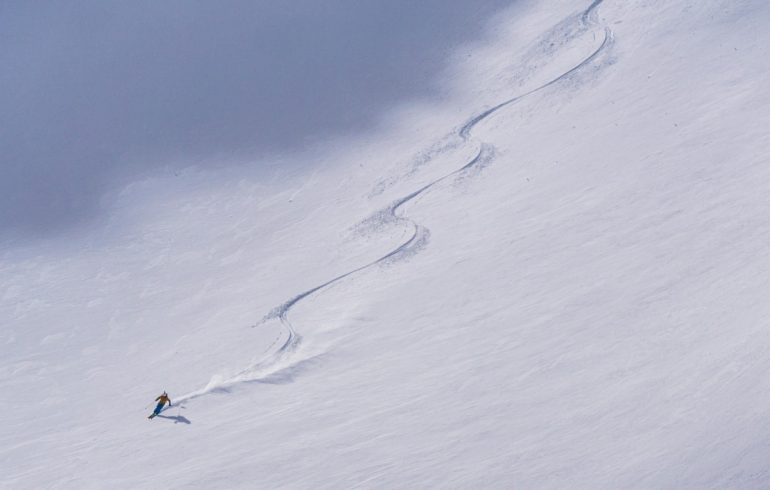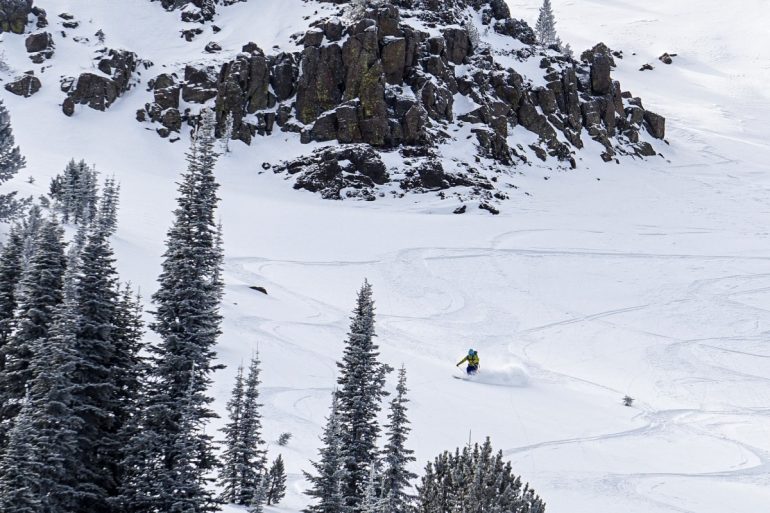Yurt life and powder hunting in Eastern Oregon
Photos by Louie Dawson and Alex Robb
To get the most of the extra day this leap year, Louie and I took the chance to explore an area we have never been to before; the Wallowa Mountains outside of Joseph, Oregon. The Wallowas are a fairly small mountain range located in the plains of eastern Oregon with a comparable geographic footprint to Washington’s Olympic Mountains. The area has some surprisingly steep and rugged peaks, including many of the highest in the state (close to 10,000 feet); it has been historically nicknamed Oregon’s “Little Switzerland”.
There are a few huts and yurts located in the range. We spent four days at Camp McCully, located in the McCully basin at 7500 feet in the Eagle Cap Wilderness Area. The yurts are located in the wilderness area which is not common and makes the experience very unique. You cannot use the usual things you’d be able to leverage to maintain a hut, such as chainsaws to cut wood or use snowmobiles to bring stuff in.
The McCully Trailhead was about seven hours drive from Seattle. Once parked, we skinned for four miles, with 1800 feet of elevation gain. The trail climbed gradually, making it possible to tow a sled to maximize the “glamping” aspect. We towed in three sleds total for a group of 10, switching between each other during the approach.
The accommodations consisted of two separate sleeping yurts, a kitchen yurt and a sauna yurt. You can book the huts individually or as a group, depending on if your trip is guided or not. The sleeping yurts are outfitted with wood stoves, cots, foam pads and zero degree sleeping bags. Bringing your own sleeping bag is recommended, however there are sleeping bag liners available to rent. We used the hut sleeping bags for extra warmth, and opted not to light the stove in the sleeping huts for most of the nights. The kitchen yurt had a wood stove, plenty of chairs to sit on, two propane stoves and dishes for cooking, eating and cleaning. Basic cleaning supplies were also provided. Just a quick walk down from the kitchen yurt of this specific camp was an active spring, so no need to melt snow for water. I enjoyed McCully camp accommodations; they were minimalistic yet comfortable, clean and had about everything we needed during our stay.
We hiked into the hut Thursday morning, arriving around noon. After reshuffling gear, we were able to catch a few runs before sunset.
Here is an awesome overview of routes on CalTopo that we primarily used to orient ourselves. In total, there were ten of us on this trip; each day we divided into smaller groups to tackle different objectives. We weren’t the luckiest with ski conditions, as the Wallowas have been having a fairly dry February. The prevalent surface offered various types of crust: wind, sun, breakable, ice, you name it. The main advantage was that avalanche conditions were perfect for exploring.
After hiking into the hut on the first day, we explored the saddle between Hourglass and Diamond peaks, skiing Pope’s Nose on the way back. The next day, a bit discouraged by strong winds, we battled our way to the top of Aneroid Mountain, and managed to not get blown away. The Wallowas mountain range views from the top were spectacular! In some ways it made us wonder why the hut wasn’t put into the next basin over near Aneroid Lake, but I bet there is a good reason for that. On the third day we hunted for better snow, ascending the saddle just below the top of Diamond. We skied D4 (Door 4) and found surprisingly light and carvable snow in the apron of the chute, as well as in the lower angle trees lower down, referred to by the CalTopo map as Putting Green. We skied the lower part of D4 and Putting Green as a morning mission before heading back to our cars on the last day.
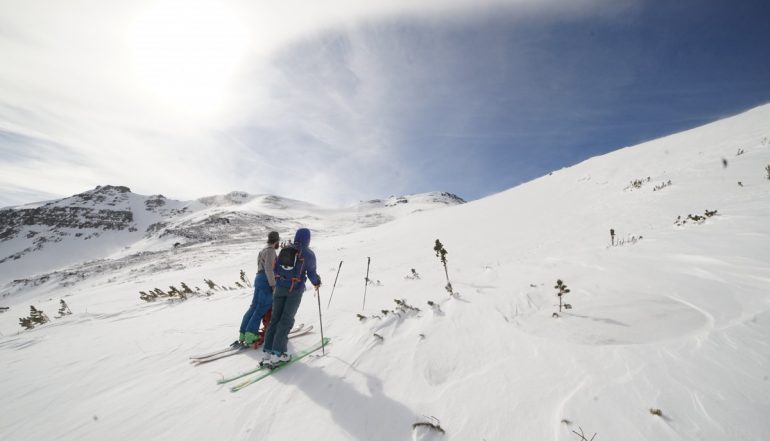
Looking up towards Hourglass on the way to Aneroid mountain. Hourglass couloir is in view on the left.
The lower elevation options offer a variety of terrain to ski, with most of the lines running fairly short: 300-500 feet. There are compelling options for newer backcountry skiers. Venturing into the alpine delivers some longer and more committing lines, leaving enough options for everyone. There are opportunities to explore nearby basins for those looking for a bigger objective.
Overall, terrain in the Wallowas exceeded my expectations. I’d love to be able to come back and explore it in better conditions. If you are looking for a hut adventure in the PNW, I would highly recommend checking this area out.
WildSnow Girl, Julia Dubinina, is a weekend warrior chasing snow in winter and sun in summer. A lover of long tours and steep skin tracks, she explores the Pacific Northwest and beyond. When she is not out adventuring, she is working away at her corporate desk job for a software company to make her next adventure happen.

